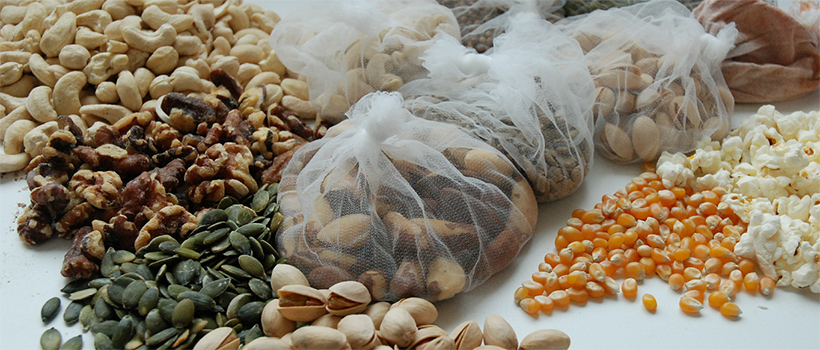
Microbiological challenge testing for process lethality - the devil is in the detail
30 January 2020 | Rob Limburn, Section Lead and Deputy Head of Microbiology
Microbiological challenge testing is the process of deliberately inoculating a food or drink with a relevant microorganism(s) to determine how they are affected by an antimicrobial process. The test design is critical.
Process validation and challenge testing - where does it fit?
Validation of thermal and/or non-thermal processes as pathogen reduction steps in the manufacture of foods is a key requirement for food business operators (FBOs) to verify the efficacy of these food safety measures. For a typical batch processed, heat-preserved, moist product, this is routinely achieved by careful measurement of temperature at the slowest heating point of the product during processing and comparison against known inactivation kinetics for target microorganisms (for example, Listeria monocytogenes pasteurisation at 70°C for two minutes) to confirm that a minimum target log reduction is reliably achieved.
However, there are some instances where time and temperature cannot be accurately correlated with log reduction. These may include:
- processes aimed at killing microorganisms on the surface of food commodities, for example roasting or saturated steam treatments applied to dried products including; nuts, seeds, spices or herbs
- where product characteristics, such as water activity (aw) or moisture are constantly changing throughout the process, or
- non-thermal processes - due to a lack of published inactivation data for target microorganisms.
FBOs operating in dry food sectors are increasingly being asked to validate their microbial kill steps using microbiological challenge tests. These tests are a powerful method of accurately determining the log reduction achieved by the processing equipment FBOs use to attain a microbial kill step. Therefore, the demand for challenge testing is on the rise.
Many institutions and laboratories have challenge testing services, all offering slightly different approaches, requirements and levels of robustness. On the face of it, it might be tempting to opt for the cheapest or simplest proposal. However, as these tests are intended to ensure that processes are achieving sufficient inactivation of pathogens, their design is as fundamental to the safety of your process as the choice of processing equipment.
Not all challenge tests are created equal
The basic principle of a challenge test for validation of a kill step is extremely straightforward:
Inoculate product with a non-pathogenic surrogate microorganism
Process inoculated product samples
Analyse processed product and calculate log reduction
However, there are several important features which, if carried out incorrectly, could lead to substantial under- or over-estimation of lethality. It is therefore crucial that such tests are properly planned and executed by specialist microbiologists.
What’s my ‘worst case’?
To determine the true range of log reduction achieved by a given process, the conditions validated should represent the worst case which can realistically occur in the process equipment.
If the target log reduction is achieved under these conditions, it will be achieved under less challenging conditions. It is therefore important that the following factors are chosen/considered carefully:
| Process settings: | lowest residence time, lowest temperature, highest feed rate, highest throughput, highest product loading, lowest steam percentage/mixing. |
| Product characteristics: | dependent on the product under assessment, some characteristics which may adversely affect process lethality include low moisture, low aw, particulate size (heat penetration/flow characteristics), surface features (such as crenulations, creases), fatty/low moisture areas, neutral pH, high Brix level and high total solids levels. |
| Sample placement: | temperature distribution analysis can identify the cold areas, spots or channels present in thermal processing equipment, allowing challenge test samples to be directed to the areas receiving the least severe process. |
Like product, like sample
The samples subjected to challenge testing must be representative of a naturally-contaminated product. The inoculation process should not affect the physical characteristics of the product, as these will in turn effect process resistance. The following must be considered:
- If the product is surface-contaminated, the samples should be surface-inoculated
- If the product is dry, inoculated samples should be dry. If microorganisms inoculated onto samples are not sufficiently dried before heating, they will be killed much more easily, leading to falsely high log reduction estimates
- If a product is contaminated throughout, the samples should be contaminated homogenously, or alternatively inoculum may be focused at ‘cold’ (slowest heating) points
Surrogate qualification
Firstly, surrogate organisms should always be non-pathogenic!
Besides this, it is based on death kinetics. The probability of an organism surviving depends on how its process resistance is affected by physical properties (for example, pH, aw, fat content, salt content, moisture level) which will vary depending on the food matrix being tested. We must also consider the type of process the organism will be exposed to, for example dry heat, moist heat, steam, high pressure, UV etc., as the responses to these forms of process will be very different. Finally, a good surrogate is at least as resistant as the target organism to the process that is applied, and ideally slightly more resistant to provide a margin of safety.
Where no published information is available in a specific product supporting the suitability of a surrogate in a processing scenario, it must be experimentally confirmed (for example, by determination of D- and z-values for the target and surrogate). We cannot simply assume that a surrogate which is appropriate for one process or product is going to be suitable for other unrelated processes or similar products unless this specific data is available.
Challenge testing
We have selected a worst-case product, process parameters and we have samples appropriately inoculated with a qualified surrogate organism - what’s next?
Samples should be introduced to the processing equipment so they are exposed to the whole process and should be retrieved as soon after the process as possible. If modifications are required in order to achieve this, such as diverting the product post-process, care should be taken to avoid any additional lethality from, for example, samples sitting at high temperatures.
Where processing equipment permits, an understanding of the temperature distribution is required, as it will allow samples to be directed to the coldest areas (e.g. of an autoclave or batch oven) or channels (e.g. of a roasting line or a baking line).
The number of samples which should be included in a challenge test should be sufficient to demonstrate the variability of the process. Due to the vast array of different processes and products, there is currently very little general guidance available on this (although there is an ISO standard currently in development), but it is generally thought that at least 10 replicate samples should be run in at least three replicate processes. Processes with higher degrees of variability, such as continuous processes, may often require more replication.
The way challenge test samples are stored and transported is also important. Generally, chilled transport is preferable to prevent growth (in high moisture products) or excessive die-off of organisms during transport. ‘Transport controls’ are inoculated samples taken to the site of a challenge test and stored under the same conditions as the challenge test samples, but not exposed to the process. These controls are analysed alongside the processed samples and used to calculate log reductions, as they reflect the initial inoculum level on the challenge test samples as affected by transport and storage, giving confidence that the log reductions calculated for the challenge test samples are due only to the process applied.
The impact of analysis
Analysis of challenge test samples may seem relatively straightforward, but there are a few important considerations:
Recovery - test organism not background flora!
Foods are not sterile and there is often a high background count on the product, which can make it very difficult or impossible to count the levels of the surrogate organism on typical microbiological media, particularly at low levels post-process. Traditionally, selective media are used in food microbiology to get around this problem. However, after processing, microorganisms are usually sub-lethally injured. The selective agents in media can stop these injured cells from growing sufficiently to show on test plates.
This poses a problem when it comes to enumerating challenge test samples. There are various approaches that can be taken to circumvent these issues:
- Sterilisation of samples by autoclaving, fumigation or irradiation - this leaves a ‘blank canvas’ for inoculation with the surrogate organism and can be very effective provided the product is not changed by the process (e.g. moisture changes due to autoclaving). These approaches would not, however, prevent cross contamination from the carrier product during the challenge test.
- The selective media overlayer or underlayer methods are also often used, by which samples are first plated out on non-selective media and incubated for a short period of time (3-4 hours) allowing recovery of heat-injured cells, followed by application of a thin layer of selective medium. Plates are incubated again, allowing selective enumeration of only the test organism.
Minimum log reduction
To be proven an effective kill step, the process under assessment should meet the minimum log reduction target in all samples tested. The important figure is therefore the minimum log reduction, which is calculated by subtracting the highest count from the processed samples from the lowest transport control count - if this figure is not at least equal to your target log reduction, the process is not doing what you want it to!
So, next time you are considering challenge testing proposals, take a moment to consider the devil in the detail!

About Rob Limburn
Rob has worked in Microbiology here within both Methods Research and Industrial Process Microbiology. He has been working in the food industry since 2004 and also has experience in allergens testing and authenticity testing.
White paper download
Click below to download a copy of the white paper in PDF format
How can we help you?
If you’d like to find out more about challenge testing, contact our support team to find out how we can help.







